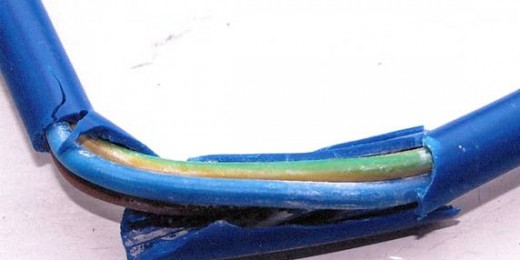How does fake cable get into the UK market?
At the recent tour of our factory in Aberdare, one question that many of our Prysmian Professionals were interested in finding out the answer to was, ‘Where does fake cable come from and how does it make its way into the UK market?’

As something that electricians and other tradespeople are worryingly faced with often, we felt that it was extremely important to find out and report back to you.
Where is fake cable manufactured?
Much of the substandard cable in the UK comes from overseas however, it can’t be attributed to any one country or specific place of origin. In places famous for high levels of mass production such as China, Turkey and India, for example, cables which differ from the usual European standard may be found more frequently, but this isn’t always the case.
There are products on the market which feature a smaller copper core than required, leading to a cost saving of around 10-15% for the buyer. This could lead to cable overheating and potential electrical fires which can cause extensive damage and should not be treated lightly. Over the past seven years, according to the Approved Cables Initiative (ACI), there have been 29,312 accidental electrical fires in England, with 5241 of these attributable to wiring, cable or plugs.1
Other EU countries have similar problems as the UK when it comes to these differences. A well-known example is Australia’s 2016 issue with Chinese Infinity cable2, which was reported widely.3
How does fake cable pass tests?
The ACI recommends that electrical contractors only purchase cable that has been independently third party approved. That way a cable will have passed relevant checks to ensure that it is what is says it is.
The problem arises where cable is purchased with counterfeit cable markings, including approval marks. It’s so important to check the labelling of products throughout the supply chain.
The ACI has a cable reference guide that acts as a complaint cable guardian. It can be found by clicking here.
How does fake cable enter the UK?
As mentioned earlier, there are some distributors who will specify cable using smaller quantities of copper and import it into the UK for sale.
Once again, it’s about carefully considering your cable choices and checking the declaration of performance.
How can we recognise fake cable?
If a cable seems cheap, or a deal is too good to be true then it probably isn’t fit for purpose. If a cable has no markings, or no recognisable markings then the contractor should contact the ACI (0208 946 6978) with their concerns for further advice on how the product can be tested and properly checked.
Wholesalers and distributors under the Construction Products Regulation (CPR) must ensure that relevant cable bought and sold is CPR compliant. Failure to do so could mean they face legal action from Government enforcement agencies.
To comply, cables must have a declared classification, a DoP and be CE marked and labelled. Where it is believed a cable does not comply it should be withdrawn or recalled.
To find out exactly how Prysmian is implementing the CPR, read more by clicking here.
Special thanks to the ACI for providing sources and information.


